In May 1961, President John F. Kennedy committed the nation to landing a man on the Moon and returning him safely to the Earth. While this goal presented an unprecedented engineering challenge, some scientists were more concerned whether the astronauts or the lunar samples could return potentially harmful microorganisms from the Moon, with possibly devastating effects to life on Earth. Although considered remote, at the time this possibility could not be ruled out and methods needed to be developed to protect the planet from any back-contamination by lunar microorganisms. The Lunar Receiving Laboratory (LRL), located in Building 37 at the Manned Spacecraft Center (MSC), now NASA’s Johnson Space Center (JSC) in Houston, served as a critical component of this planetary protection plan during the Apollo program.

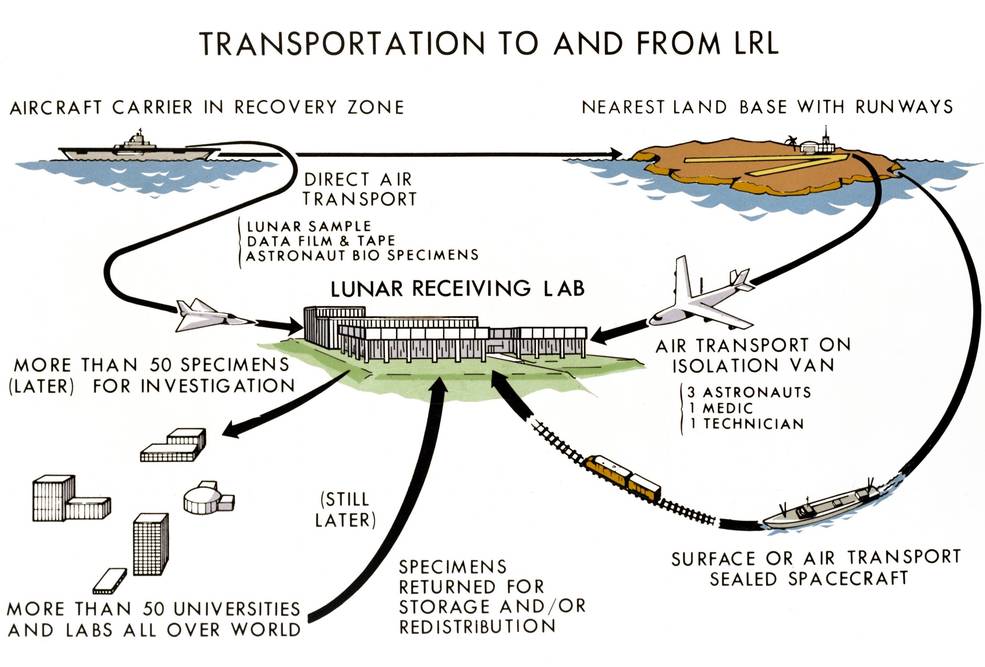
Left: Schematic showing the major functional areas of the Lunar Receiving Laboratory (LRL).
Right: Diagram showing the role of the LRL in the overall postflight transportation
and quarantine operation.
The facility was specially designed and built to isolate astronauts and rock samples returning from the Moon to prevent back-contamination of the Earth by any possible lunar microorganisms, and to prevent contamination of the lunar samples. To accomplish these goals, the LRL consisted of four major functional areas: the Crew Reception Area (CRA), the Sample Operations Area, the Radiation Counting Laboratory, and the Administrative and Support Area. The CRA and the Sample Operations Area were inside the biological barrier to prevent any accidental contamination of the Earth with any lunar microorganisms. A complex vacuum system ensured that air could not escape from the facility and that the terrestrial atmosphere would not contaminate the pristine lunar samples. The CRA included dormitories for the three returning astronauts and for the staff who supported them during their 21-day quarantine. A separate room within the CRA held the Apollo Command Module during the quarantine period. Medical facilities, a small gym, a kitchen and dining area, and a glass-walled room for holding debriefings and press conferences rounded out the CRA. The Sample Operations Area included a gas analysis laboratory, a vacuum laboratory, and physical and biological sciences test laboratories. In these laboratories, many including vacuum gloveboxes, scientists put the lunar samples through a variety of analyses to test their structure and composition and their effects on biological specimens. The Radiation Counting Lab housed a state-of-the-art gamma ray spectrometry laboratory constructed of low-background radiation material and built 50 feet underground to minimize exposure to background radiation. The Administration and Support Area housed offices and conference rooms.
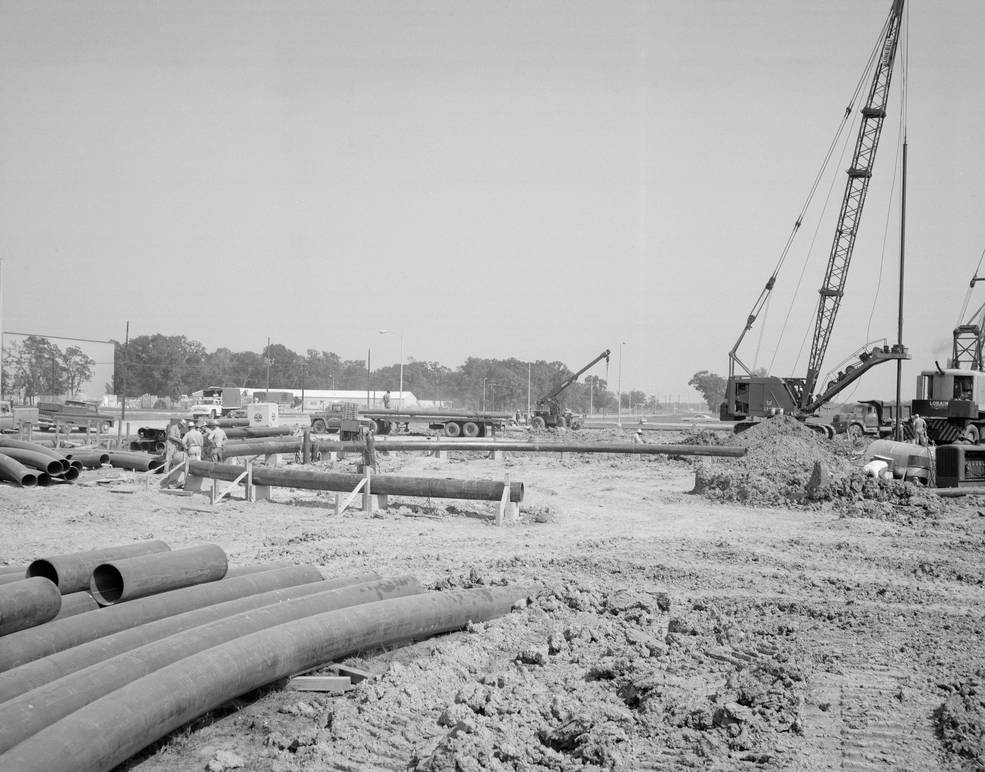

Left: Ground preparation for the Building 37 site in September 1966.
Right: Initial steel structure in place for Building 37 in October 1966.
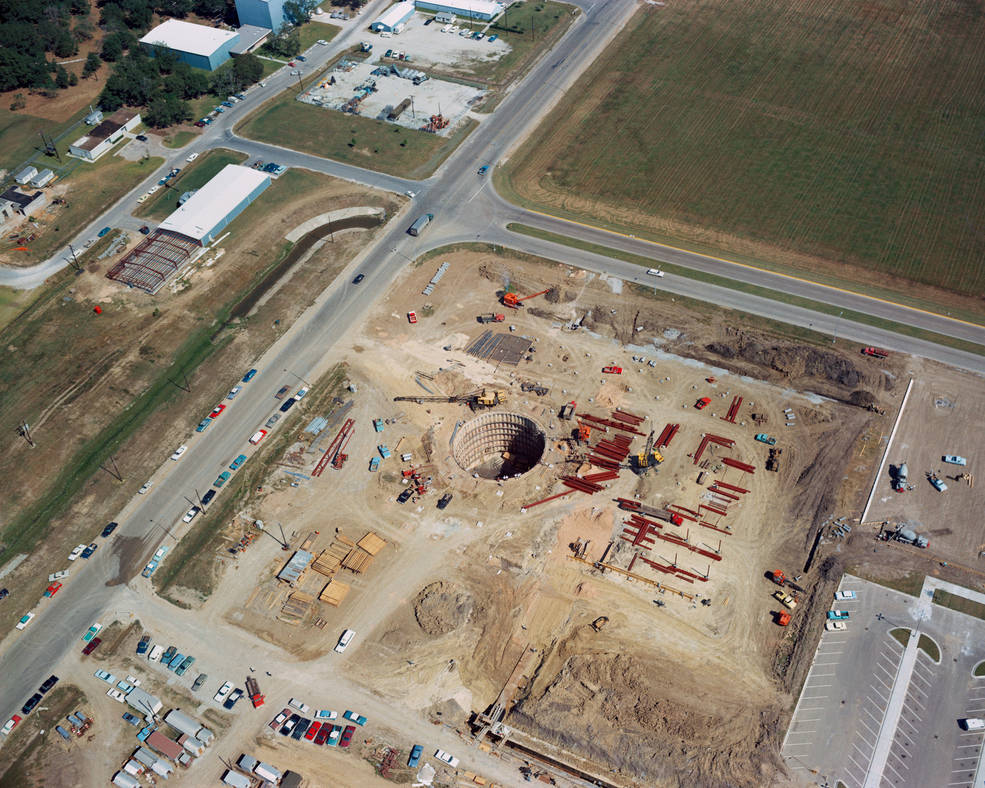


Left: Aerial view of the Building 37 site in October 1966, with the circular 50-foot deep hole for the radiation vault. Middle: Closeup of the radiation vault hole as workers pour the concrete for the foundation. Right: Aerial view of the completed Building 37, the Lunar Receiving Laboratory (LRL), in October 1967.
Construction of Building 37 began in August 1966 and just 10 months later, in June 1967, the first employees began moving into their offices and laboratories. Managers held a press conference on June 29 to brief the media on the LRL’s functions and planned operations. Between Sept. 18-20, MSC held a three-day meeting to brief more than 100 U.S. and international scientists, selected to receive the first lunar samples for study, on the status of the LRL and to familiarize them with the procedures of the lab.


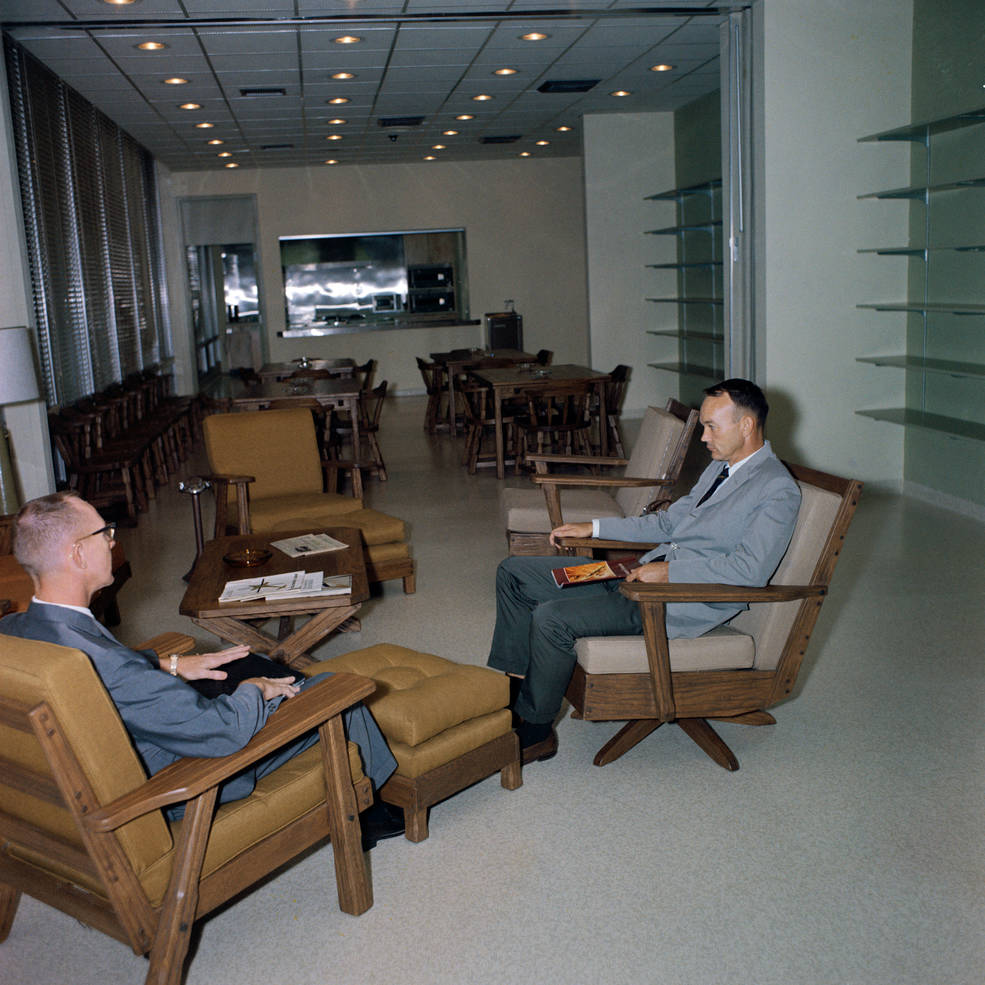
Left: During a September 1967 tour of the Lunar Receiving Laboratory (LRL), astronaut Michael Collins receives a demonstration of the lab’s gloveboxes. Middle: Collins sitting in one of the bedrooms of the LRL’s Crew Reception Area (CRA). Right: Collins, right, seated in the CRA’s lounge and dining area.
On Sept. 25, 1967, astronaut Michael Collins, a veteran of the July 1966 Gemini X mission, toured the facility. In addition to the research areas, Collins visited the Crew Reception Area where, unbeknownst to him at the time, less than two years later he would spend nearly three weeks with fellow Apollo 11 astronauts Neil A. Armstrong and Edwin E. “Buzz” Aldrin in quarantine following their successful lunar landing mission.

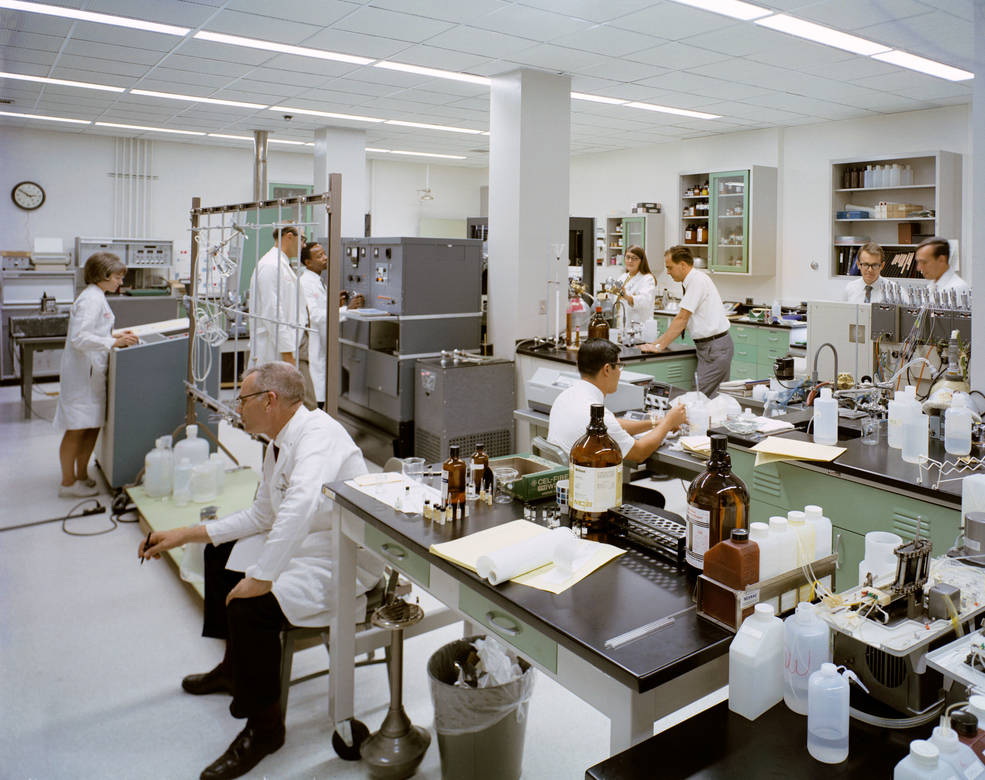

Left: The Lunar Receiving Laboratory’s (LRL) complex vacuum machinery. Middle: One of the LRL’s biochemistry laboratories. Right: The gas analysis laboratory.
In October 1968, the LRL team conducted a simulation of some of the lab’s capabilities, with the first lunar landing potentially less than a year away. Operations simulated during the 10-day test included the vacuum system, rare gas analysis system, physical-chemical test area, and the radiation counting laboratory. The biological preparation area participated in some aspects of the simulation. Procedures in the Sample Operations Area were carried out by the NASA and external scientists selected to conduct the preliminary examination of the first lunar samples. A full-scale simulation, including of the Crew Reception Area, was completed in March and April 1969. Three months later, the LRL welcomed the first Moon rocks collected by the Apollo 11 crew and the astronauts themselves.
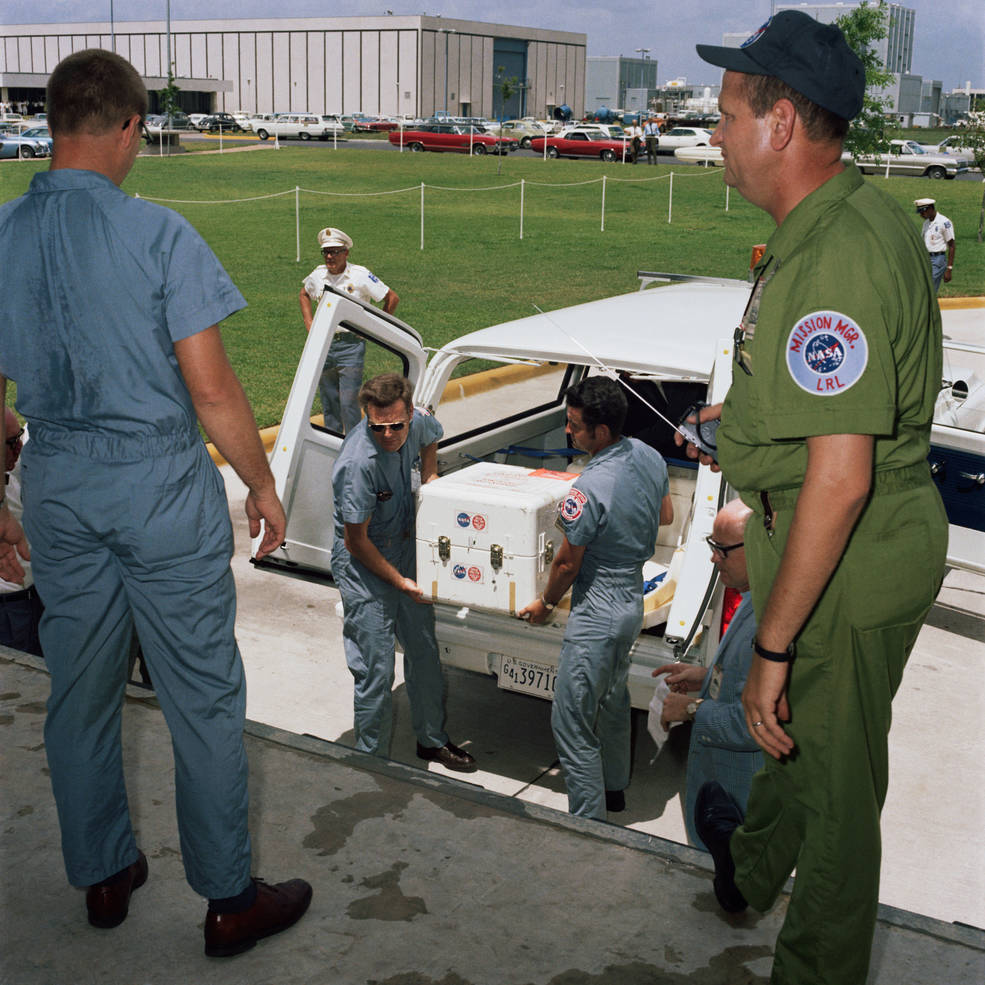


Left: Quarantine Control Officers Howard J. Schneider, left, and Gary W. McCollum deliver the first of the Apollo 11 sample boxes at the Lunar Receiving Laboratory (LRL). Middle: At the LRL, senior NASA managers (in shirtsleeves) George M. Low, left, Samuel C. Phillips, Thomas O. Paine, and Robert R. Gilruth, look over the first sample boxes from the Apollo 11 mission – the box on the left contains the lunar rock and soil samples, the box on the right contains film magazines. Right: The first box of Moon rock samples, opened in the LRL about 48 hours after splashdown.
The first batch of Moon rocks and film magazines from Apollo 11 arrived at the LRL on July 25, having flown from the prime recovery ship U.S.S. Hornet to Ellington Air Force Base (AFB) in Houston, via Johnston Island in the Pacific Ocean. The second batch arrived about six hours later. The next day, about 48 hours after splashdown, scientists in the LRL opened the first box of samples inside a glovebox for humanity’s first glimpse of Moon rocks. Technicians opened the containers of film magazines and began the process of sterilizing them before the images could be developed and shared with the world.

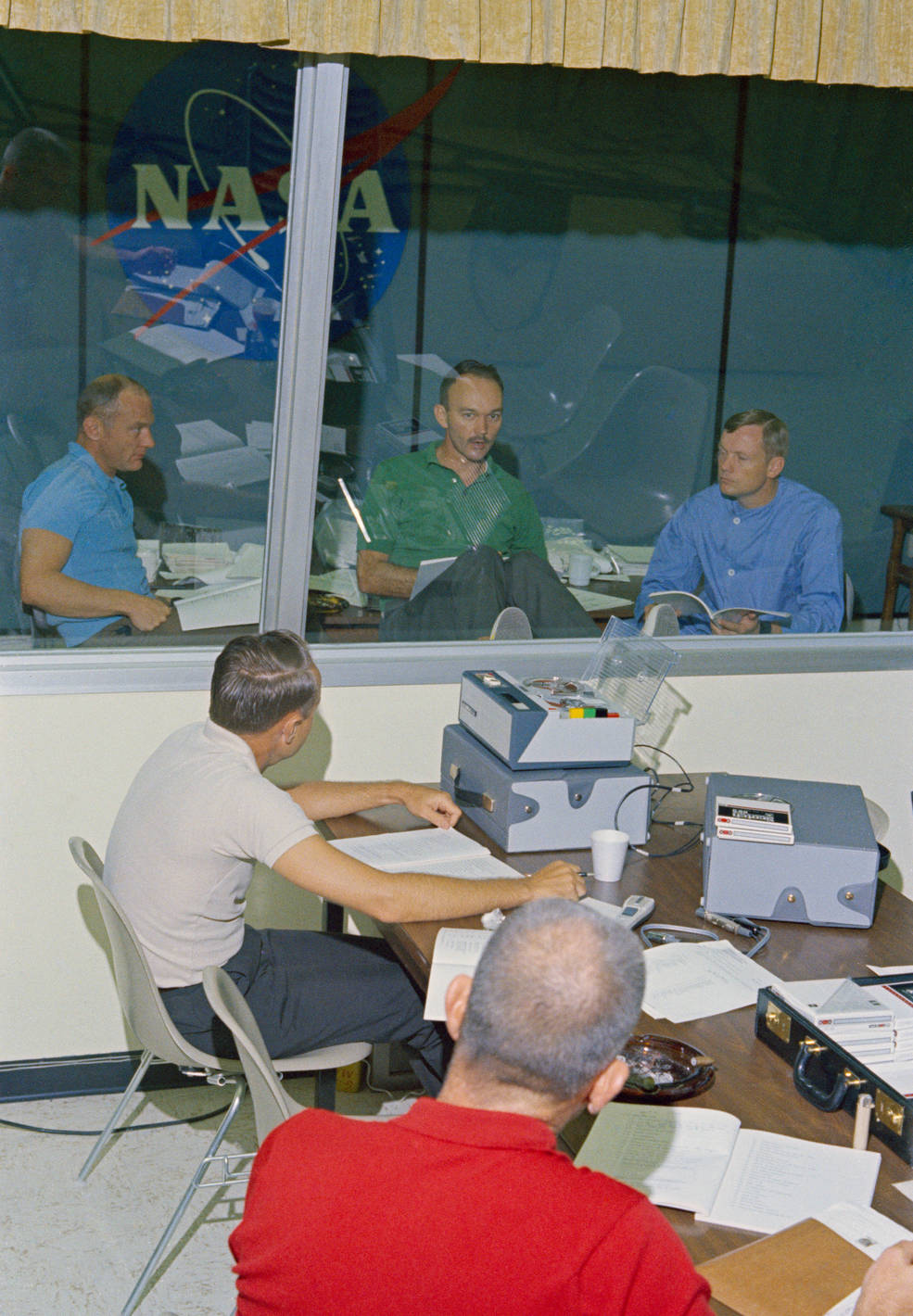

Left: Apollo 11 astronauts Neil A. Armstrong, left, Michael Collins, and Edwin E. “Buzz” Aldrin give short speeches upon their arrival in the Crew Reception Area of the Lunar Receiving Laboratory (LRL). Middle: Aldrin, left, Collins, and Armstrong behind the glass partition during postflight debriefings in the LRL. Right: Armstrong celebrates his 39th birthday in the LRL.
Apollo 11 astronauts Armstrong, Collins, and Aldrin arrived by cargo jet at Ellington AFB at about 2 a.m. on July 27 inside the Mobile Quarantine Facility. After the short drive to MSC, they entered the LRL to complete their 21-day postflight quarantine. Doctors performed daily health checks to look for any signs of possible infections by lunar microorganisms. During their stay, Armstrong celebrated his 39th birthday and the crew completed their postflight technical debriefings, separated by a glass wall from other participants.


Left: The Apollo 11 Command Module Columbia arrives at the Lunar Receiving Laboratory (LRL), with the Mobile Quarantine Facility still docked to the building. Credit: Image courtesy Tiziou News Service. Right: In the LRL’s Crew Reception Area, Apollo 11 astronaut Michael Collins sits in Columbia’s hatch.
Last to arrive to the LRL, on July 31 workers towed the Apollo 11 Command Module Columbia into the spacecraft area in the CRA.


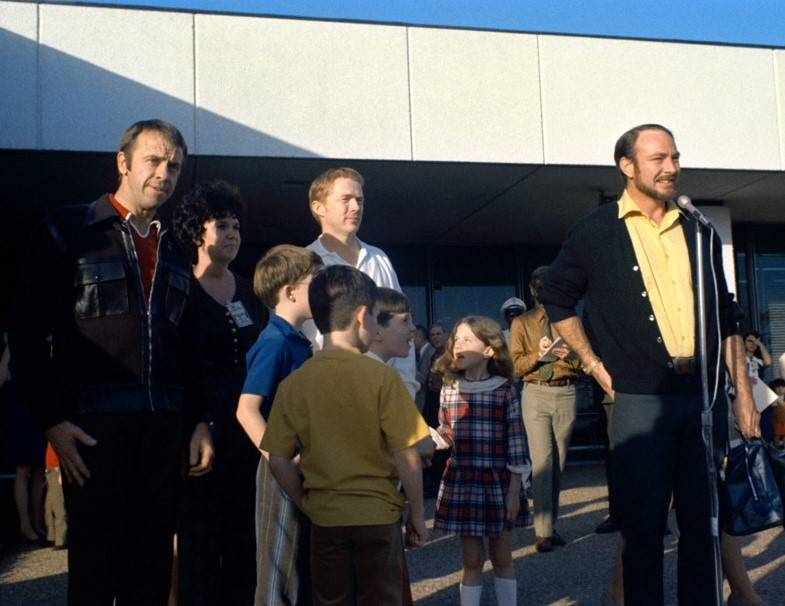
Left: Apollo 11 astronauts Edwin E. “Buzz” Aldrin, left, Michael Collins, and Neil A. Armstrong shake well-wishers’ hands as they leave the Lunar Receiving Laboratory at the end of their 21-day postflight quarantine. Middle: Apollo 12 astronauts Alan L. Bean, left, Richard F. Gordon, and Charles “Pete” Conrad leave the LRL following their 21-dayquarantine. Right: Apollo 14 astronauts Alan B. Shepard, left, Stuart A. Roosa, and Edgar D. Mitchell leave the LRL, the last crew to undergo the 21-day postflight quarantine.
On Aug. 10, doctors declared Armstrong, Collins, and Aldrin medically fit and free of any infections and they left the LRL to return home to their families. Although scientists found no evidence of any lunar microorganisms in the Apollo 11 samples, the following missions landed in different parts of the Moon and doctors maintained the postflight quarantine for the Apollo 12 and 14 crews – Apollo 13 did not land on the Moon following an explosion during the outbound journey.



Left: In the Lunar Receiving Laboratory (LRL), botanist Charles H. Walkinshaw tests the effects of lunar soil returned by Apollo 11 on a variety of plants. Middle: Robert R. Gilruth, right, former director of the Manned Spacecraft Center, now NASA’s Johnson Space Center in Houston, examines lunar samples returned by Apollo 17. Right: Radiation scientist Robert S. Clark prepares to load a sample of a personal radiation dosimeter worn by one of the Skylab-3 astronauts into the LRL’s radiation detector.
Although the Apollo 15, 16, and 17 crews did not have to endure the 21-day postflight quarantine, the LRL still continued with its functions of examining the lunar material returned by the last three Apollo missions and distributing samples to outside scientists. The radiation counting laboratory examined the radiation dosimeters of the nine Skylab astronauts to evaluate the radiation doses they received during their long-duration missions.



Three plaques in Building 37 commemorating the Lunar Receiving Laboratory’s role during the Apollo Moon landing program.
As the LRL ceased operations in June 1973, JSC’s Life Sciences divisions and laboratories transitioned into Building 37. Much of the specialized hardware used in the LRL was transferred to the Atomic Energy Commission’s laboratory in Los Alamos, New Mexico. The lunar samples and essential scientific research functions of the LRL relocated to the Lunar Sample Curatorial Facility in nearby Building 31. Only the gas analysis and radiation counting laboratories remained in Building 37. Years later, plaques were mounted on the walls in Building 37 commemorating the historic role the facility played during the Apollo Moon landing program. The lessons learned from the LRL will be applied to future missions returning samples from Mars and other places in the solar system.
The biomedical laboratories vacated Building 37 in July 2017, relocating to the Human Health and Performance Laboratory in the newly-built Building 21.
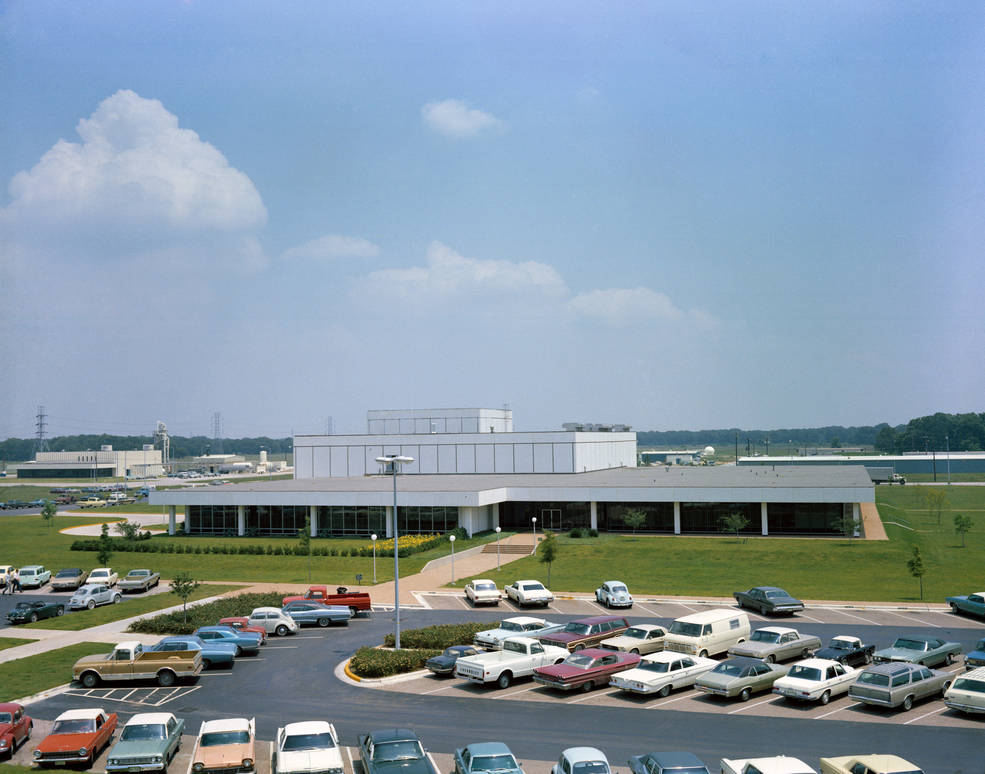
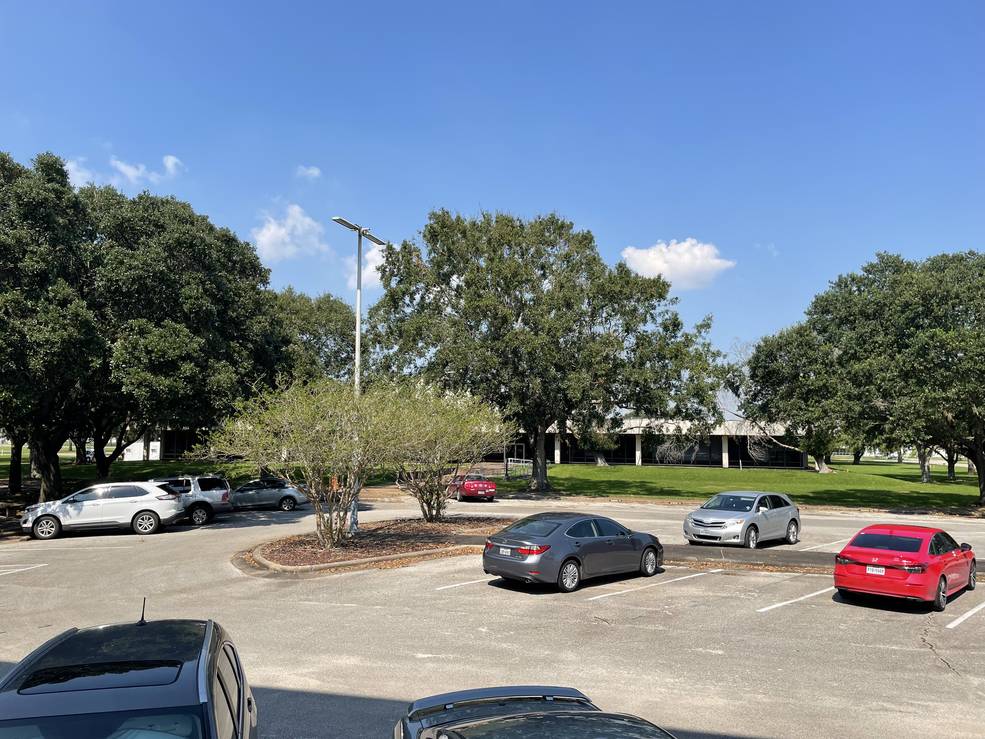
Building 37 in May 1969, left, and in October 2021.
To be continued…

























